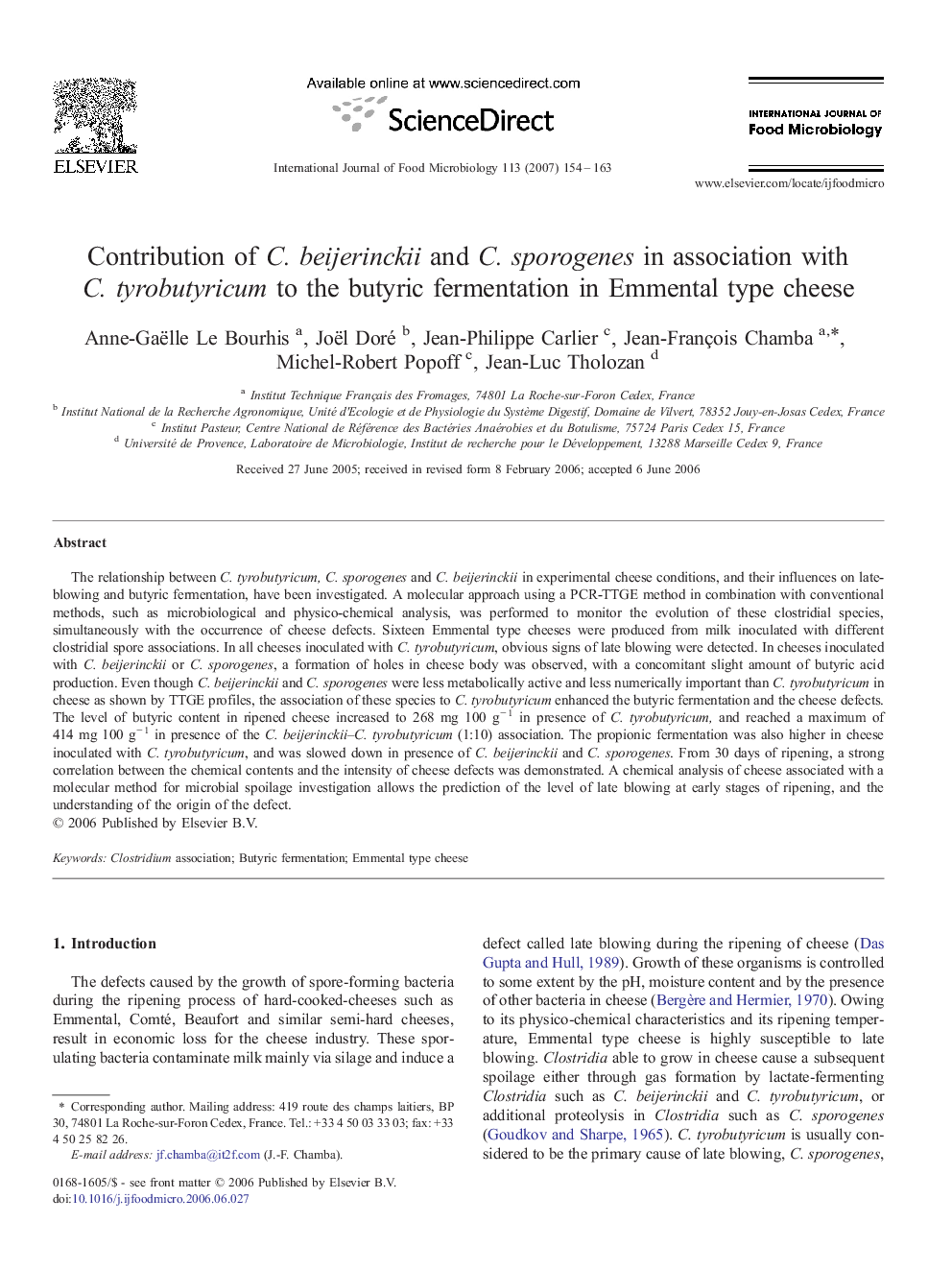| کد مقاله | کد نشریه | سال انتشار | مقاله انگلیسی | نسخه تمام متن |
|---|---|---|---|---|
| 4369747 | 1616755 | 2007 | 10 صفحه PDF | دانلود رایگان |

The relationship between C. tyrobutyricum, C. sporogenes and C. beijerinckii in experimental cheese conditions, and their influences on late-blowing and butyric fermentation, have been investigated. A molecular approach using a PCR-TTGE method in combination with conventional methods, such as microbiological and physico-chemical analysis, was performed to monitor the evolution of these clostridial species, simultaneously with the occurrence of cheese defects. Sixteen Emmental type cheeses were produced from milk inoculated with different clostridial spore associations. In all cheeses inoculated with C. tyrobutyricum, obvious signs of late blowing were detected. In cheeses inoculated with C. beijerinckii or C. sporogenes, a formation of holes in cheese body was observed, with a concomitant slight amount of butyric acid production. Even though C. beijerinckii and C. sporogenes were less metabolically active and less numerically important than C. tyrobutyricum in cheese as shown by TTGE profiles, the association of these species to C. tyrobutyricum enhanced the butyric fermentation and the cheese defects. The level of butyric content in ripened cheese increased to 268 mg 100 g− 1 in presence of C. tyrobutyricum, and reached a maximum of 414 mg 100 g− 1 in presence of the C. beijerinckii–C. tyrobutyricum (1:10) association. The propionic fermentation was also higher in cheese inoculated with C. tyrobutyricum, and was slowed down in presence of C. beijerinckii and C. sporogenes. From 30 days of ripening, a strong correlation between the chemical contents and the intensity of cheese defects was demonstrated. A chemical analysis of cheese associated with a molecular method for microbial spoilage investigation allows the prediction of the level of late blowing at early stages of ripening, and the understanding of the origin of the defect.
Journal: International Journal of Food Microbiology - Volume 113, Issue 2, 25 January 2007, Pages 154–163